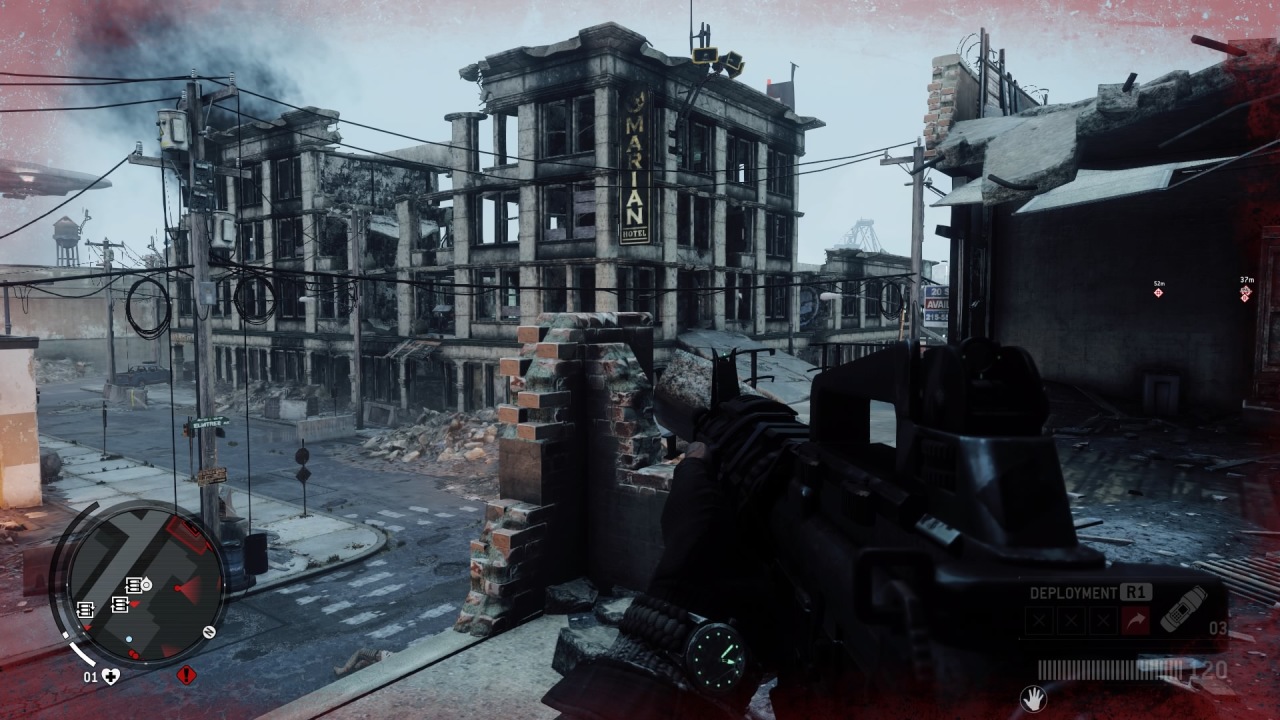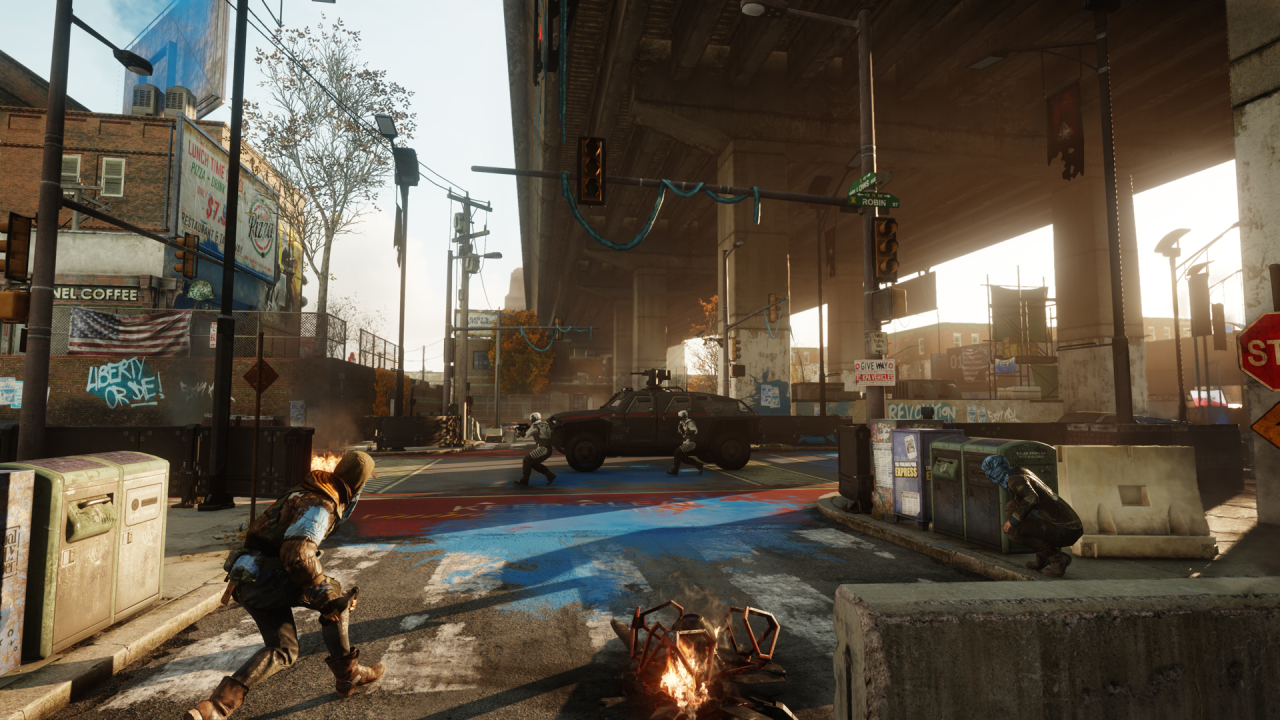Homefront: The Revolution Review [PS4]
The revolution will not be without glitches.

“Development hell” is a phrase that get’s thrown about a lot these days but in Homefront: The Revolution’s case it’s perfectly accurate given the troubles the game has seen on its way to release.
Billed as the follow-up to the underwhelming Homefront developed by THQ’s Kaos Studios and written by Red Dawn writer John Milius back in 2011 The Revolution has survived the collapse of THQ and the near-collapse of Crytek who bought the IP in the wake of THQ’s demise. It was eventually picked up by publisher Deep Silver who bought the game, the IP and the studio developing it from Crytek back in 2014. With all of that happening it’s a miracle that Homefront: The Revolution has been released at all.
Instead of a follow-up it’s more fair to say that The Revolution is a bit of a reboot of the franchise. It’s set in Philadelphia in an alternative near-future where North Korea gain global dominance and annexes the US under the guise of providing humanitarian aid in the wake of war and financial ruin. It’s not quite the same story as the original game where North Korea conquers China using its military before crushing the US brutally but it’s similar enough that anyone who played the full four hours (yep, just four hours) of the original’s campaign will recognise it.

You’re thrust into a battle for survival as part of the resistance in a war-torn and destitute version of Philadelphia. The city is split into red and yellow zones. Red zones are off limits to civilians and they see all out war between the resistance and the Korean People’s Army (KPA) while the yellow zones are where the civilian population of Philadelphia has been herded under the guise of keeping them safe.
While the game is ostensibly an open-world first-person shooter in the mold of recent Far Cry titles, the freedom to move around Philadelphia has been curtailed somewhat in comparison with the likes of those games. Each zone is a separate map that must be accessed by way of the resistance’s underground tunnel network which means loading screens during the transition.
This does help to create the image of a population subjugated cruelly by the KPA but it’s likely that it’s as much a technological decision as it is a narrative one.
Technologically speaking, Homefront: The Revolution looks stunning on the PS4. Chosing to segregate the game’s areas rather than making it fully free-roaming has allowed much more detail to be included into each of the game’s yellow and red zones. Visuals are magnificent and the number of citzens that populate the yellow zones makes it feel more like an actual city than a just another game environment.
The latest news, features and interviews direct to your inbox, from the global home of alternative music.

The gameplay is actually pretty good. The game has been developed using Crytek’s Cryengine technology which is arguably the best-looking game engine around and it is perfectly suited to first-person gameplay. The action is smooth and the weaponry is solid and suitably meaty in battle. It is also heavily customizable thanks to the in-built features of the Cryengine plus some nifty design choices by developer Dambuster Studios.
At first sight it seems like there is a very limited choice of weaponry – just a pistol, a shotgun, an assault rifle, a crossbow, a battle rifle and a rocket launcher. This is heavily supplemented by weapon modifications though in a very cool way. Each gun has a variety of muzzle, under-barrel and scope options available but there is a further full-scale mod option that allows you to change how the weapon works. The pistol, for instance, can be modded into a sub-machine gun or a completely silent pneumatic pistol from the basic 9mm you get handed early on. All of the weapons, bar the rocket launcher, have this capability effectively tripling your arsenal and your options.
It’s a neat touch and gives a great feel to the way the game is played. It really does feel like a ramshackle guerilla force fighting the technological and numerical superiority of the KPA.
Fighting in the red zones and yellow zones differ quite nicely too. Red zones just require all out warfare. Using guerilla warfare works best as you capture the many different strategy points to help push the KPA out of the zone. Yellow zones require much more subtlety and stealth. You need to walk around with your weapon concealed and carry out smaller tasks like disabling patrols and helping citizens getting arrested or shaken down by the KPA to gain their trust and support before being able to incite the kind of rebellion required to achieve the story mission objectives.
Again, this has a nice flow to it and gives you plenty of freedom to explore the game at your own pace. If you feel stealthy you can hit a yellow zone and try and incite rebellion or if you feel more combative you can jump into a red zone and take the KPA on head-on.

Now we get to the problems. The Cryengine is a hideously demanding piece of gaming technology. It has become notorious for making extreme demands on PC gaming hardware to the point of overheating graphics processors. Unfortunately it seems to have a negative effect on the smoothness of The Revolution’s gameplay. The game stalls during transitions and auto-saves. While this might have been forgivable five years ago, the massive smooth open worlds of Skyrim and Grand Theft Auto have made this kind of stall unacceptable. They’re not long pauses but they get frustrating if you’re playing the game for more than a few hours.
There’s also a myriad of graphical glitches and flaws that just haven’t been picked up. After capturing one KPA stronghold my character appeared jammed between a staircase and a set of shelves and was unable to move. I needed to quit to the main menu and reload to rectify the problem. Then there are the citizens levitating around a foot above the pavement, or the fellow resistance fighters that block you into a corner and won’t get out of your way. It all smacks of a game that was still a bit too rough around the edges to be finished, but was released regardless.
Homefront: The Revolution is not a bad game, even with its glitches and flaws. Underneath the rough edges there is a great open-world shooter with some nice touches and a storyline that, while it doesn’t set any new standards in game narrative, keeps you playing on to see what happens next. Just don’t expect a completely smooth experience while you’re doing it.
Score: 7⁄10
